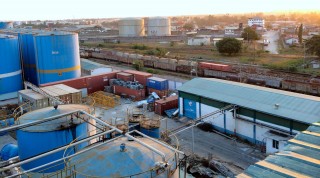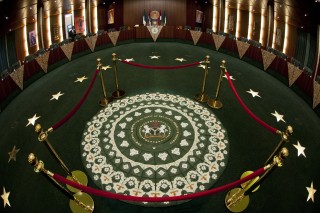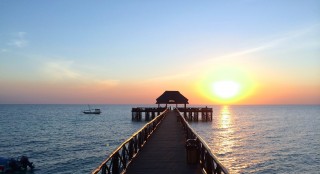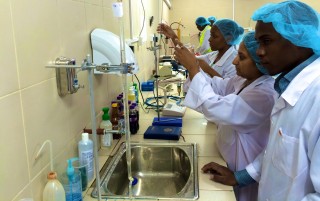A little more than 20 years ago, an airplane carrying Rwandan President Juvenal Habyarimana and Burundian President Cyprien Ntaryamira was shot down mysteriously on its descent into Kigali. The genocide that would consume Rwanda, a small Central African country, for the next 100 days will forever shock historians. The close-quarter murdering of nearly 800,000 people, largely by machetes, were coordinated by radio broadcast after the Hutu majority chose to target the country’s Tutsi minority in response to the killing of Habyarimana.
As Rwanda emerged from the genocide in late 1994, the country struggled to build momentum. Leaders like Pasteur Bizimungu, courted international donors and sponsors – culminating with former U.S. President Bill Clinton’s unofficial apology in March 1998 on the tarmac at Kigali airport – but laboured unsuccessfully to jumpstart investment, boost the overall economy and foster reconciliation.
When current Rwandan President Paul Kagame assumed office in March 2000 after Bizimungu resigned, and subsequently won election in August 2003, skeptics largely (and arguably rightfully so) held sway on outsiders with predictions of more failure. But today’s Rwanda—under the leadership of Kagame and his ubiquitous personality—has emerged as a model for economic growth, with Kagame as the face of African leadership.
The story of a booming Africa is well-documented. The International Monetary Fund (IMF) predicted 5.5 percent growth for sub-Saharan Africa in 2014, compared to 3.6 percent globally. Critics regularly highlight that these eye-popping numbers—north of 10 percent in a few countries—are largely the result of oil and gas reserves and the mining of valuable minerals and metals, greatly needed by emerging and developed countries alike. Yet, Rwanda, though lacking the levels of reserves and mining opportunities of its peers, is growing at an average of nearly 8 percent over the past five years. And this is largely to due to Kagame’s permeating presence of hope and prosperity for country.
The Kagame’s plan
The country is small with approximately 12 million persons, yet the country has strived under Kagame’s economic development plan—heavily focused on increased agricultural productivity, tourism, technological growth and intense government spending on infrastructure.

Take coffee for example – an industry figuratively wiped out by the genocide and the mishaps of leadership following it – coffee is exemplary of the change in the larger agriculture sector. Export earnings grew by an estimated 33 percent in 2013, underpinned by increased coffee and tea production. In 2000, Rwanda’s first coffee cooperative earned around $0.20 per kilogram of regular-quality coffee. In 2013, it is estimated that the same co-op earned nearly $4.00. The Ministry of Finance estimates that greater agricultural production could push economic growth above 11 percent as well as further its poverty reduction plan.
Technology has greatly changed the landscape in the country. Mobile penetration is surpassing 70 percent, compared to a decade ago when the country was effectively offline. The government recently signed a deal with a South Korea firm to create a 4G network with the expectation that 95 percent of Rwandans will have access to high-speed internet at its conclusion. Facebook is rolling out a pilot online education program in Rwanda, as part of a larger pitch to bring internet to the world’s most unconnected populations. Rwanda hopes to become the IT hub for East Africa with even greater potential for becoming a back-office hub for financial services in East Africa and beyond.
The Kagame Effect
Kagame attributes this change to the great infrastructure investment by his government. Roads are new and clean. Buildings are popping up everywhere. A high tech commodity exchange, with terminals and software provided by Nasdaq, is one of the many manifestations of the change. A.T. Kearney’s naming of Rwanda as one of Africa’s most attractive African market for retailers is another one.
But it is not simply infrastructure changing investors’ outlook. Kagame has smooth-talked the likes of Mark Zuckerberg (CEO of Facebook), Howard Schultz (CEO of Starbucks) and Jim Sinegal (CEO of Costco). Kagame’s well documented ability to speak with investors from east to west has created believers and buyers at the same time. Such efforts, on behalf of Kagame, are also a reflection of a growing concern about Rwanda’s heavy dependence on foreign aid. Nevertheless a bond sale of $400 million in April 2013 ultimately displayed Kagame’s charming capabilities with investors.
The Kagame effect is real, says several private investors. Ashish J. Thakar, 32 year-old Ugandan-born multi-millionaire entrepreneur recently stated his intentions to return his award for ‘World’s Best Young Entrepreneur’ to the World Entrepreneurship Forum, a France-based think-tank founded by EMLYON Business School, KPMG France, and the Nanyang Technological University in Singapore. Thakkar is doing so as a protest to the efforts of the forum’s organizers to discredit and discourage the acknowledgement of the achievements of Kagame.
Reconciliation as a process
A walk through Kigali gives no semblance of a country wrestling with a history of violence. Tutsi and Hutu pride gives way to Rwandan growth and equal participation in the economic success.
Rwanda has the highest percentage of women appointed to government in the world. Approximately two-thirds of the Rwanda parliament are women, compared to barely 18 percent in the United States. It is not just government where women are creating noise. On the streets, in big businesses and in agriculture, women are playing strategic roles in the economy. Local councils and non-profits—on a surface analysis—appears dominated by women who intend to ensure that Rwanda does not return to the days prior and just after the genocide. The government, in response to women-based movements, mandated a 30 percent quota in the constitution.
Yet Kagame may find his greatest cohort of critics when discussing reconciliation, as human rights groups continue to attack the government on its political policies. Claims of authoritarian rule and revenge-laden policies and tactics received a lifeline when the country’s former spy chief Patrick Karegeya was murdered in January in a Johannesburg hotel in South Africa. Claims that the Rwandan government physically destroys dissidents within and outside its borders are mostly just ‘claims.’ But the government’s clear lack of sadness in the death of certain individuals, such as the spy chief, give critics fuel for the fire that Kagame is behind such attacks. Critics (and their supporters) will have to provide more information before they can convince the Kagame following that they are supporting the wrong guy.
The Rwandan success story does not come without price. Many Rwandans still refuse to return home until the scars have healed (and for some, that time may never come). Economic growth and success cannot always erase history (or reconstruct a new Rwandan perception) for everyone. The history must always be remembered and appreciated for its lessons and learnings (or it will just repeat itself). The same can be said for Kagame’s work in Rwanda and the lessons it holds for other African countries.








